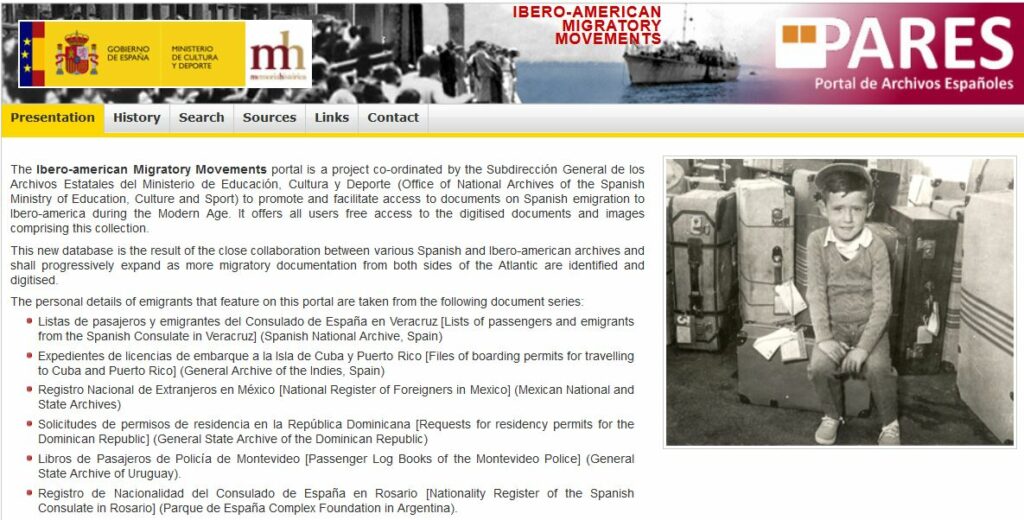The Ibero-American Migratory Movements Portal is a project coordinated by the Subdirectorate General of State Archives of the Spanish Ministry of Culture and Sport, developed with the aim of promoting and facilitating access to documentary collections relating to Spanish emigration to Ibero-America in the period of Mass European emigration to the Americas. It offers free access to any user interested in accessing the documents and digitised images of these collections.

This database is the result of intense cooperation between various Spanish and Latin American archives, which will gradually increase as the documentation of a migratory nature preserved on both sides of the Atlantic is described and digitised.

General Archive of Administration (Spain)
After the discovery of America, Spanish migration to the Indies was a constant linked to the colonisation of the new territories which produced a steady flow of emigrants to the continent. However, the colonial age is not very relevant to migratory movements if we compare it with the emigration that took place during the 19th and 20th centuries.
In keeping with the dynamics of certain European countries, between the end of the 19th century and the first thirty years of the 20th century, Spain became a country of economic emigration. This is the age of massive emigration of Spaniards to America, which had a social importance and demographic weight way above that of the colonial era. During this chronological period, the American continent opened its doors to immigrants. Many governments believed that the solution to the lack of labour and the exploitation of new products lay in this group of people, and that their work force could materially develop emerging states.

General Archive of Administration (Spain)
It is difficult to calculate the exact number of Spanish emigrants leaving to America during this period due to the dispersion of sources, but it fluctuates between two and four million people according to authors. Of all the Ibero-american countries receiving Spanish workers, Argentina and Cuba recorded the highest percentage of continuous flow, as immigration was encouraged by various governments and strengthened by family networks.
The Great Depression during the thirties put an end to massive emigration to America, although the phenomenon did not simply vanish. At this time, host countries started to restrict the entrance of new immigrants.
However, the Spanish Civil War saw the start of a new migratory wave: exile. Mexico, under the presidency of Lázaro Cárdenas, rescued and received between fifteen and twenty thousand exiled Spanish republicans from refugee camps in France, and became one of the main host countries.
This database currently allows consultation of 77,480 records of emigrants and 244,802 digitised images of documents from archival collections that provide evidence of emigration to Argentina, Cuba, Mexico, Puerto Rico, the Dominican Republic and Uruguay.
Through this project, many descendants of Spaniards have been able to follow the documentary trail of their ancestors, either out of simple family curiosity or, in most cases, to obtain documents that generate rights of option to Spanish nationality, especially in the case of the descendants of political exiles. Therefore, with this project, the Spanish State Archives have contributed to generate digital resources that allow the restitution of rights in a context of democratic memory.
Cristina Díaz Martínez
Head of Institutional Relations. Spanish State Archives
For more information, visit the portal or watch the following video (in Spanish).
